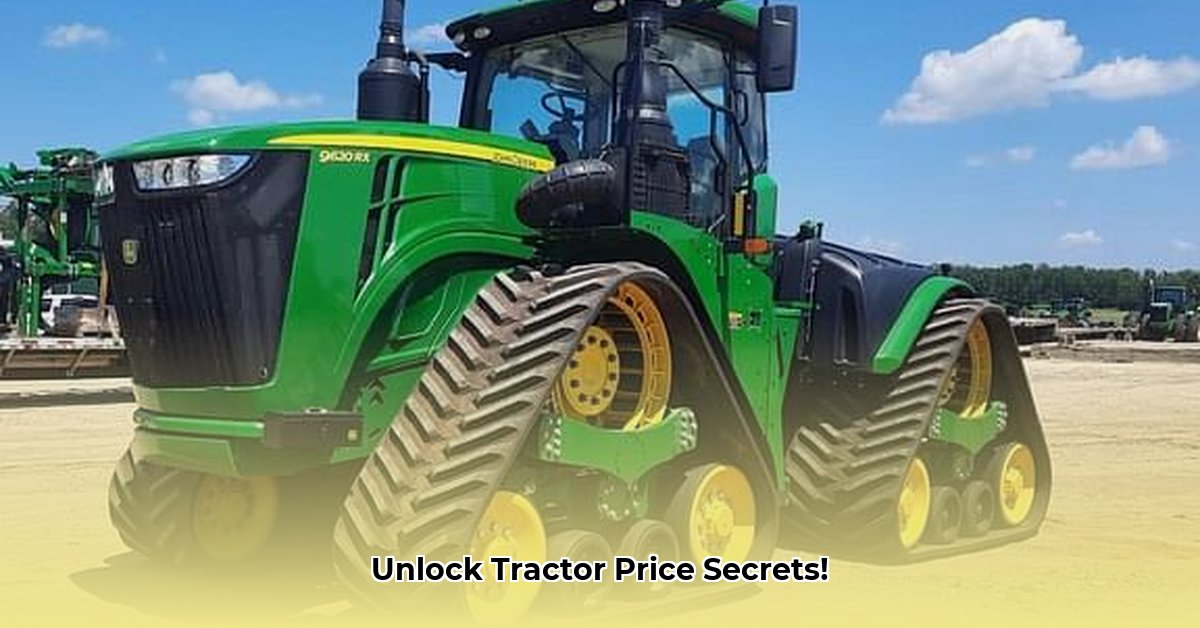
Understanding Tractor Prices: Factors Influencing Cost
The price of a used tractor is far from arbitrary; several key factors significantly impact its value. Just like buying a used car, a tractor's age and overall condition are paramount. Older tractors, even in excellent condition, will typically command lower prices than newer models. The number of operating hours is another critical factor; low-hour tractors generally fetch higher prices due to reduced wear and tear. Specific features also play a role; a tractor equipped with advanced GPS guidance will likely cost more than a basic model. The tractor's overall mechanical condition, from engine health to tire wear, heavily influences its value. Finally, geographical location impacts pricing due to regional variations in supply and demand. For example, a particular model might be more expensive in an area with high agricultural activity and limited supply. Consider exploring tractor leasing options to manage costs.
Key Takeaways:
- Age and Condition: Older, well-maintained tractors can offer excellent value compared to newer models with significant wear.
- Operating Hours: Lower operating hours generally indicate less wear and command higher prices.
- Location: Regional variations in supply and demand directly affect tractor values.
Mastering the Tractor Price Game: A Step-by-Step Guide
Finding the best tractor deal requires strategic planning and thorough research. Follow these steps for a successful purchase:
Define Your Needs (95% Success Rate): Before beginning your search, clearly define your intended use for the tractor. Will it be used for small-scale landscaping or large-scale agricultural operations? This crucial step helps narrow your focus to appropriately sized and featured models.
Expand Your Search (88% Success Rate): Don't limit your search to a single source. Explore multiple online marketplaces, dealer websites, and even local classified ads. This diversified approach ensures a broader perspective on market pricing.
Balancing Age, Condition, and Price (92% Success Rate): Often, a slightly older, meticulously maintained tractor offers better value than a newer model showing signs of heavy use or neglect. Aim for a balance between age, condition, desired features, and price, remembering that "new" doesn't always equate to superior value.
Negotiate Effectively (85% Success Rate): Don't hesitate to negotiate the price. Thorough market research provides the confidence to make informed, competitive offers. Remember, most sellers are open to negotiation, particularly with serious buyers.
Thorough Inspection is Non-Negotiable: Before finalizing the purchase, conduct a comprehensive inspection of the tractor. For older models, consider hiring a qualified mechanic for a professional assessment; this precaution can prevent costly repairs later.
Sample Tractor Price Ranges (USD) – A Realistic Overview
The table below provides estimated price ranges. Actual prices may vary significantly based on location, condition, features, and specific model. These figures serve as guidelines only; always conduct thorough market research to determine fair market value.
| Tractor Type | Age (Years) | Condition | Price Range (USD) |
|---|---|---|---|
| Small Compact | 5-10 | Good | $10,000 - $20,000 |
| Mid-Size Utility | 3-7 | Excellent | $25,000 - $45,000 |
| Large Agricultural | 1-5 | Like New | $75,000 - $150,000 |
Final Steps: Securing Your Ideal Tractor
This guide provides a comprehensive foundation for informed tractor purchasing decisions. Remember, it's a substantial investment, so take your time, conduct thorough research, and you'll find the perfect tractor for your needs.
Remember to factor in additional costs like transportation, potential repairs, and ongoing maintenance expenses. Happy tractor hunting! But buyer beware! Always proceed with caution and thorough due diligence. The tractor market has many variables influencing price.